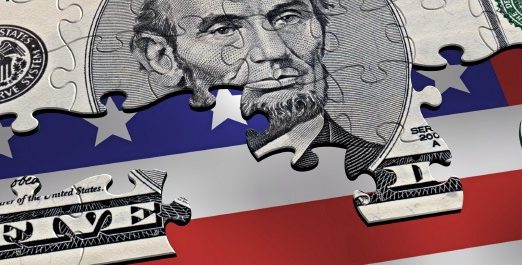Pace of inflation slows in April, CPI up 8.3% year-over-year
by May 11, 2022 4:54 pm 397 views

Inflation in April was up 0.3% from March and 8.3% higher than a year ago, according to the Consumer Price Index (CPI) reported by the U.S. Department of Labor on Wednesday (May 11). Economists had forecast CPI to rise 0.2% in April and 8.1% on an annualized basis.
While inflation slowed from the previous periods it was still hotter than economists had forecast and it remains among the highest readings in decades. Core inflation, which excludes food and energy costs, rose 0.6% from March and was 6.2% higher than a year ago. The cost of airfares, new automobiles, food and rents were each up sharply in April contributing to the bulk of the month-over-month and annual increases.
Bullish economists believe inflation peaked in March. Economists expect consumers to shift from purchases of goods to more discretionary spending on travel and entertainment. Wells Fargo economists said high inflation will be here for much of this year and now appears to be hitting the travel sector hard.
“Inflation remains widespread, making it all the more difficult to curtail,” wrote Wells Fargo economists Sarah House and Michael Pugliese. “On an annualized basis, the core CPI inflation experienced in April was still more than triple the Federal Reserve’s 2% target.”
HOUSING, ENERGY COSTS
Wells Fargo expects the May report will be enough to push the Federal Open Market Committee (FOMC) to seek higher interest rate hikes the year and next with a faster unwinding of its balance sheet.
Airfares rose 18.6% in April, the highest monthly increase since 1967. The average round-trip domestic airfare rose by $66 to $358 in April, according to data from Google Flights. Overall, the cost of airfares climbed 33.3% year-over-year, the highest increase since 1980.
“Rising jet fuel prices, surging demand, and lower overall capacity compared to 2019 are together driving the highest airfare for summer travel on record for at least the past 5+ years,” noted Hayley Berg, lead economist at Hopper, a platform to shop for flights and hotels.
Rents rose 0.6% in April and prices for electricity and natural gas to heat and cool homes rose 13.7% from a year ago, the largest jump since the recession in 2008. Food prices rose 0.9% in April from the previous month and they were up 9.4% from a year ago. CPI showed baby food prices up 13%, chicken breasts up 69% and the cost of eggs rose 23% from a year ago.
CONSUMER REACTION
Consumers have already begun to adjust their behaviors and spending patterns according to a recent survey by Acorns. When asked about how they would adjust their behaviors if higher prices persist, half said they would cut back on dining out, 42% would cut back on driving, 40% would cancel a trip or vacation, 36% would cancel a subscription and one-third said they would consider switching to a generic brand to save money.
The survey also found the same consumers were already adjusting their spending patterns over the past six months as 53% were dining out less often. Another 39% were reducing their driving because of higher gasoline costs, 35% had already canceled a subscription, and 32% had already made the switch to generic on some items. Lastly, 29% had canceled a trip or vacation because of tighter budgets.
Wells Fargo also said consumers seem to be somewhat resilient to the inflationary prices for the things they really want given their sound balance sheets. MasterCard Spending Pulse reporting total retail sales excluding automobiles rose 7.2% in April compared to the prior-year. In-store sales increased 10%, while e-commerce sales fell 1.8% compared to last year, reflecting consumer demand to get out, according to the Mastercard report that is not adjusted for inflation.
Online sales were up 92% versus pre-pandemic April 2019. California, New York, Florida, Nevada and Illinois were among the states leading the charge back to brick-and-mortar. Mastercard reports apparel sales were up 10.8% from a year ago and up 8.4% from prior to the pandemic. Home furnishing sales were up 3.8% from the prior year and grocery sales rose 12.4%.
“Whether for a family barbecue, returning to the office or senior prom, it seems like everyone is out shopping for something,” said Steve Sadove, senior advisor for Mastercard and former CEO and chairman of Saks Incorporated. “Mastercard SpendingPulse shows spending across sectors in April.”
